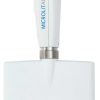n West Africa, where the climate is characterized by high temperatures and humidity, the proper storage of culture media is crucial for maintaining the viability and effectiveness of microbial growth. Culture media are essential components in microbiological laboratories, providing a nutrient-rich environment for the cultivation of microorganisms. To ensure accurate and reliable results in research, diagnostics, and various scientific applications, it is imperative to adhere to specific storage guidelines tailored to the unique climatic conditions of West Africa.
Challenges in West Africa’s Climate:
West Africa experiences a tropical climate with elevated temperatures and humidity levels throughout the year. These environmental conditions can pose challenges to the stability and quality of culture media, potentially leading to contamination or degradation. High temperatures may accelerate the breakdown of components within the media, while humidity can introduce moisture, promoting bacterial or fungal growth. To overcome these challenges, laboratories in the region must implement stringent storage protocols.
Proper Storage Practices:
- Temperature Control: Maintaining a controlled storage environment is essential. Culture media should be stored in a cool and dry space, away from direct sunlight and heat sources. Refrigerators or temperature-controlled rooms set at recommended temperatures (typically between 2-8°C for most media) should be utilized to prolong the shelf life and efficacy of the media.
- Moisture Prevention: Humidity is a common culprit in the degradation of culture media. Laboratories should invest in moisture-resistant packaging for media and store them in airtight containers to prevent exposure to moisture. Desiccants can be added to storage areas to absorb excess humidity and protect the media from deterioration.
- Adequate Labeling: Proper labeling is crucial for easy identification and tracking of culture media. Ensure that each container is clearly labeled with the media type, preparation date, and expiration date. This helps in maintaining an organized inventory and prevents the use of expired or compromised media.
- Rotation and Monitoring: Implement a robust inventory management system that includes regular rotation of stock to ensure the use of the oldest media first. Regular monitoring of storage conditions, including temperature and humidity levels, should be conducted to identify and address any deviations promptly.
- Education and Training: Laboratory personnel should be well-informed about the importance of proper culture media storage. Training programs should emphasize the specific challenges posed by the West African climate and provide guidelines on maintaining optimal storage conditions.
In West Africa, where the climate can be demanding on laboratory materials, proper storage of culture media is paramount to the success of microbiological research and applications. By implementing temperature control, moisture prevention, adequate labeling, rotation, and monitoring practices, laboratories can safeguard the quality and efficacy of culture media. Education and training play a crucial role in ensuring that laboratory personnel are equipped with the knowledge and skills needed to maintain optimal storage conditions. Adhering to these guidelines will contribute to the reliability and accuracy of microbiological studies in the region.









